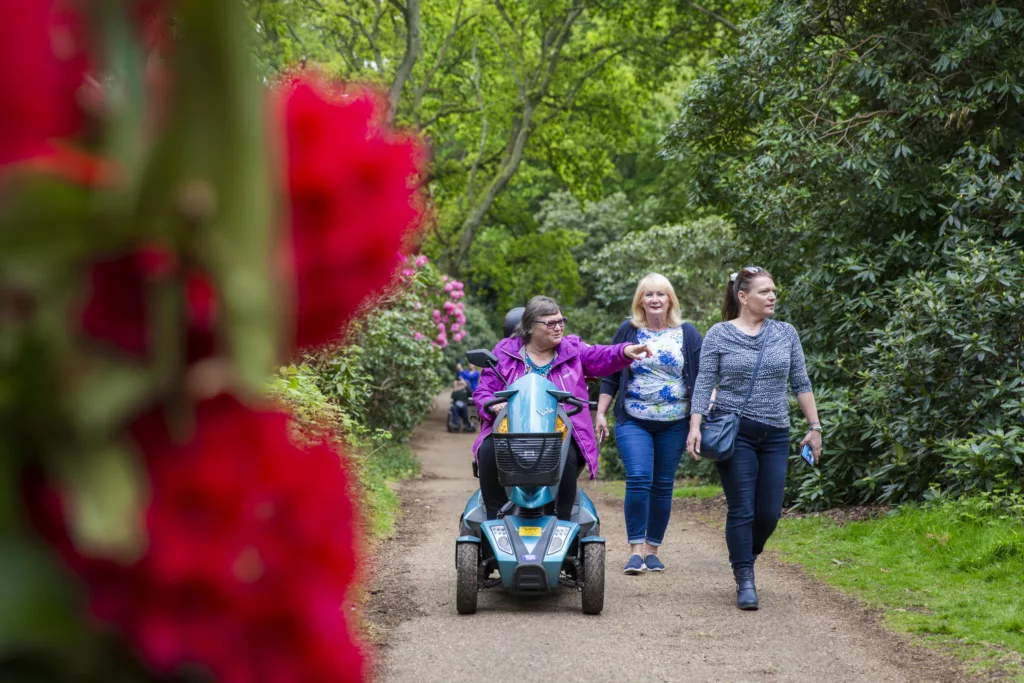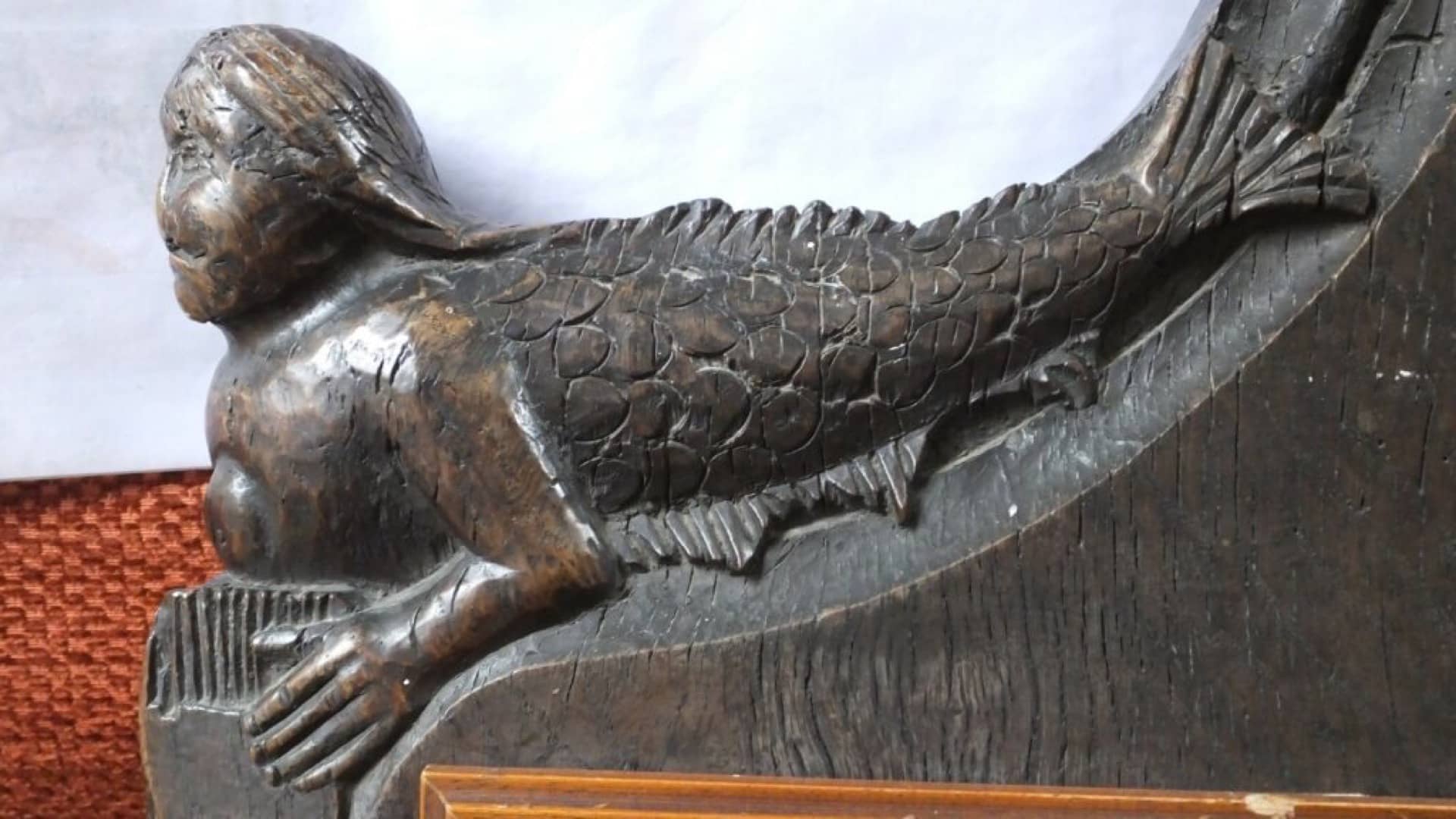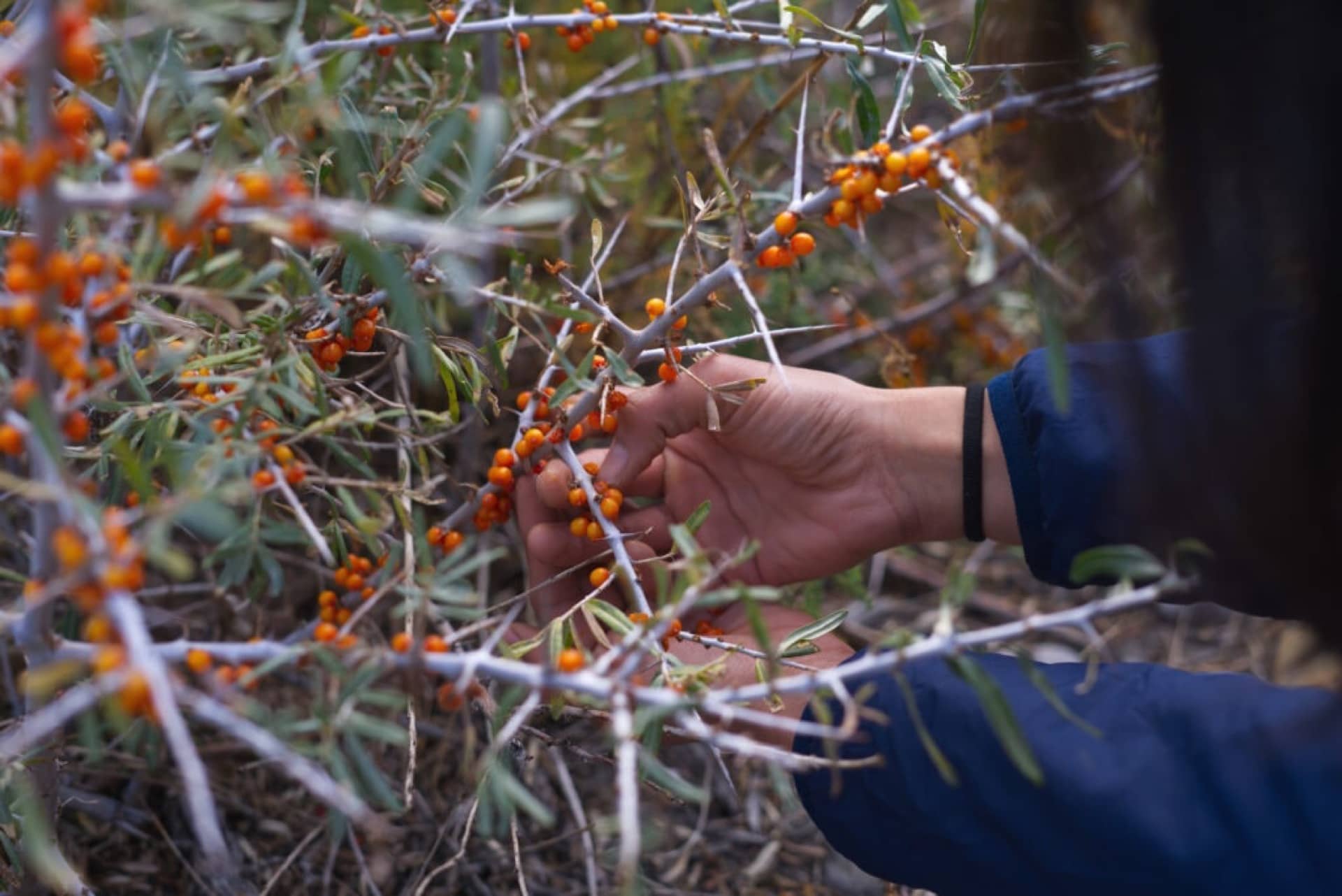
Sheringham Park: A Vision in a Red Leather Book
Looking for Norfolk’s best winter walks? Try Sheringham Park. Rolling over nearly 1,000 acres of landscaped parkland and wooded glades it was designed by Humphry Repton to frame some of Britain’s most magnificent sea views.
Repton’s landscape proposals of 1812 are documented in one of his famous red leather books of which only 200 survive. He wrote ‘Sheringham possesses more natural beauty and local advantages than any other place I have ever seen’. Thus enchanted, Sheringham Park stands as one of the finest examples of Humphry Repton’s work and vibrant source of inspiration for landscape designers. Many of his plans were implemented by others, but Sheringham is true to Repton’s original vision; perhaps that’s why it was one of his favourites.
Paths meander through magical woodlands, farmland and down to coastal cliffs, glorious walking all year round. In late spring, shiny evergreen rhododendrons burst into gorgeous bloom, starred with abundant azaleas. Hot pink, bright orange, sassy purple, aflame with showy reckless energy. No wonder the Victorians associated them with danger as well as passion and abundance! See the clouds of vibrant colour from the tree-top tower which gives a 360º view of the park.
Four routes explore different aspects of this idyllic Victorian landscape. Time the Red Route to meet the steam train at Weybourne Station for a heritage ride back to Sheringham. Sheringham Park is brilliantly accessible for disabled visitors, with hearing loops, large print maps, Braille guides, wheelchairs and battery powered vehicles available at the Visitor Centre.

Sheringham Mermaid
On a sandbank off Sheringham, a mermaid sang to the wandering stars, forlorn and all alone. One winter night it seemed her searching voice heard an answering call. Echoing through the streets came the sweet sound of human voices raised in harmony amid cascading peals of church bells. Enchanted, she hauled herself onto the pebble beach. Her silvery fish’s tail was cumbersome in the cold air, but the singing was so beautiful she dragged her body inch by inch over the rough streets and into the church.
But these were fishing folk and mermaids are unpredictable creatures, agents of both fortune and disaster, changeable as the sea. Besides, they have no immortal soul. So the people were afraid and cast her out.
When they’d gone, she crept back into the church. And she’s there still. At All Saints in Upper Sheringham you’ll find a mermaid carved into the end of a 15th century pew. Perhaps angels took pity on the sea nymph’s lonely heart and, as wooden figureheads guide ships to harbour, they brought her safely home.
If you want to be sure of getting home safely, listen for the Yow Yows. That’s Sheringham’s term for a sudden squall, named after uncanny sounds shifting across the waves before storms strike. Some say it’s the drowned voice of an old sea captain still cursing local fishermen who let him perish. If you hear cries of eternal distress, return immediately to shore, for his warning is an omen of doom

Norfolk’s Great Chalk Reef
Not all reefs are made of coral! A stone’s throw from the Norfolk shore, just under water, is the largest chalk reef in Europe, possibly the world.
The Cromer Shoals Chalk Bed was formed 100 million years ago when dinosaurs roamed the earth. Shaped by meltwater at the end of the last Ice Age it’s 20 miles long, 6 miles wide and teeming with life. Stretching from Weybourne to Happisburgh, the reef is home to over 350 different species of plants and animals, some found nowhere else in the world. It’s significance as one of the England’s most ecologically important marine habitats was recognised in 2016 when the reef was designated a Marine Conservation Zone (MCZ).
Norfolk’s remarkable reef is home to edible and velvet crabs, lobsters, starfish, jellyfish and some fabulously unusual creatures such as the Atlantic ancula sea slug, leopard spotted goby (a shy fish) and strawberry anemone (scarlet with tiny green spots).
On a winter beach walk when the tide’s out you’ll see chalky hollows studded with flint, where rock pools provide a safe haven for winkles, limpets and strange dark red jelly-like blobs. These are beadlet anemones, gorgeously jewel coloured, highly territorial sea-creatures whose soft bodies conceal short tentacles with a potent sting.
To experience the full expanse of the chalk reef you need calm seas, low tides and an elevated position. There’s a great vantage point on Skelding Hill, reached by walking north from Sheringham towards Weybourne on the cliff top coastal path.

Gathering Sea Buckthorn
The winter land has its own bounty, ripe for foragers who know where to look. On Norfolk’s cliffs the silver blue Sea Buckthorn blazes with glowing orange berries from early autumn. The Greek name is ‘hippophae rhamnoides’ meaning ‘shining horse’ because of the glossy sheen the fruit gave stallions’ coats.
These tough native shrubs spread networks of suckers, holding the sand together, stabilising coastal erosion. Sea Buckthorn thrives in the Himalayas where the juice is a popular restorative and was used in the 13th century as a tonic for Genghis Khan’s armies. It’s a survivor, dominating more fragile species, so forage with a clear conscience – but beware the stiletto sharp thorns! Wear long sleeves, good thick gloves and bring a container for the thin-skinned berries which burst as you pick them. A trick is to take secateurs, snip off whole branches and freeze the lot before snapping the berries off the stem.
Sea Buckthorn are dioecious, meaning the plants are either male (pollen and flowers) or female (abundant fruit). Tart and tangy with a bitter note, Sea Buckthorn is a Vitamin C rich superfood, ideal for making syrups, curds and jellies with plenty of recipes online. Here’s one of our favourites – Sea Buckthorn Gin. What a gorgeous sustainable homemade Christmas present!
Sea Buckthorn Gin
600g Sea buckthorn berries
300g sugar
1 litre Gin
- Put the gin, sugar & berries into large sterilised jars
- Shake it up
- Wait 4-6 weeks, shaking occasionally
- Strain through cheesecloth into bottles
- Drink – cheers!
Build your own itinerary
If you fancy creating your own itinerary for a day trip to Norfolk or a longer visit, it couldn’t be simpler. Just go to Search Activities and select from our wide range of free and paid-for experiences, saving any that capture your imagination with the click of a button.
Once you’ve finished, you’ll find all the information stored in My Favourite, where you can drag and drop activities to create your own day-by-day itinerary! You can download this to a calendar and even share it with friends.
